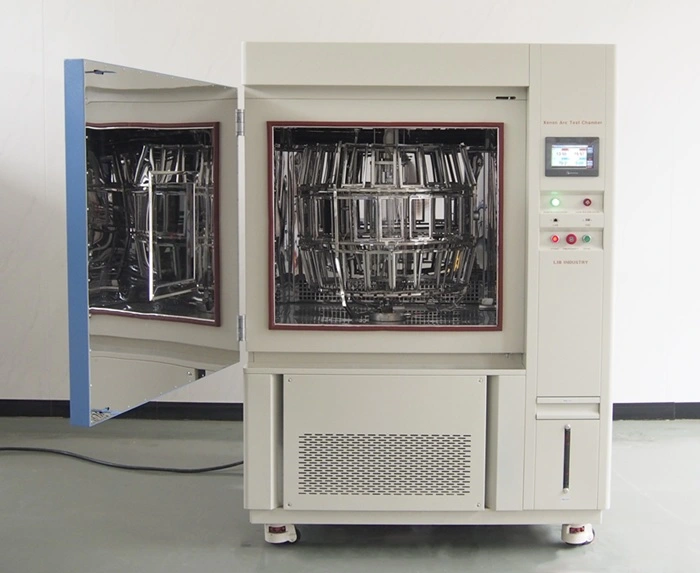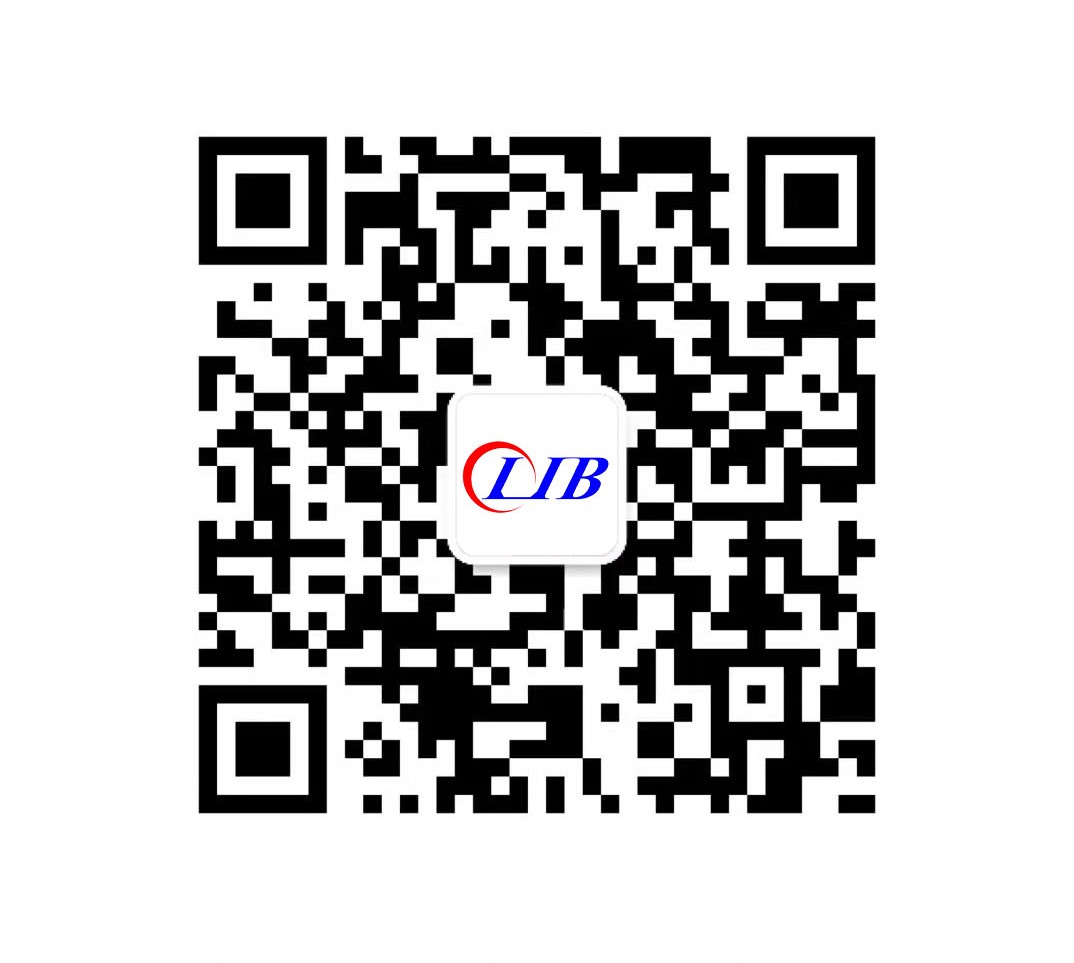How Weatherometer Chambers Simulate Long-Term Outdoor Exposure?
How Weatherometer Chambers Simulate Long-Term Outdoor Exposure?
Weatherometer chambers replicate years of outdoor weathering in weeks through controlled acceleration of natural degradation factors. These sophisticated testing instruments use high-intensity xenon arc lamps to mimic solar radiation while precisely managing temperature, humidity, and moisture cycles. By intensifying environmental stressors within a calibrated system, manufacturers can predict how materials will perform after prolonged exposure to sunlight, rain, and temperature fluctuations. This accelerated aging process enables product developers to validate durability claims, improve formulations, and ensure quality standards before market release - transforming months or years of real-world testing into actionable data within controlled laboratory timelines.

The Principle of Accelerated Testing: Compressing Time
Concentrating Environmental Stressors
Accelerated weathering operates on the principle that material degradation can be expedited by increasing the intensity of environmental factors beyond natural levels. Rather than waiting years to observe fading, cracking, or chalking, weatherometer chambers concentrate UV radiation, thermal stress, and moisture exposure into compressed timeframes. This concentration doesn't alter the degradation mechanisms - it simply speeds them up while maintaining realistic material responses.
Establishing Acceleration Factors
The relationship between laboratory exposure and outdoor weathering is quantified through acceleration factors, typically ranging from 3:1 to 8:1 depending on geographic location and climate conditions. A chamber running at 0.55 W/m² irradiance at 340nm might replicate one year of Florida outdoor exposure in approximately 1,500 hours of testing. These factors are determined through extensive correlation studies comparing laboratory results with actual outdoor weathering stations.
Maintaining Mechanistic Accuracy
Effective acceleration requires preserving the chemical and physical pathways of natural degradation. Excessive intensification can trigger unrealistic failure modes - such as thermal decomposition that wouldn't occur outdoors. Quality weatherometer chambers balance speed with accuracy, ensuring that accelerated results genuinely predict outdoor performance rather than creating laboratory artifacts unrelated to real-world conditions.
How is Real-World Solar Radiation Intensified in a Chamber?
Xenon Arc Lamp Technology
Xenon arc lamps produce the most accurate simulation of full-spectrum solar radiation available in laboratory equipment. Unlike carbon arc or fluorescent UV sources, xenon lamps emit continuous wavelengths from ultraviolet through visible to infrared ranges, closely matching the spectral power distribution of natural sunlight. The LIB weatherometer employs a 4500-watt water-cooled xenon lamp that delivers irradiance levels from 35 to 150 W/m² across critical UV wavelengths.
Optical Filtering Systems
Raw xenon lamp output requires filtration to eliminate unrealistic short-wavelength UV that doesn't reach Earth's surface. Borosilicate glass filters paired with specialized coatings remove wavelengths below 290nm while maintaining appropriate spectral balance in the UV-A and UV-B regions. Different filter combinations simulate various outdoor conditions - direct sunlight through window glass, shade exposure, or open-air weathering.
Irradiance Monitoring and Control
Precise irradiance control prevents testing variability caused by lamp aging or power fluctuations. Built-in radiometers continuously measure output at specific wavelengths (typically 340nm or 420nm) and automatically adjust lamp power to maintain target intensity levels. This closed-loop control system ensures consistent exposure throughout extended test programs, with measurement accuracy within ±5% tolerance ranges.
Controlling Cyclic Conditions: UV Light, Darkness, and Moisture
Light-Dark Cycling Protocols
Natural outdoor exposure involves continuous light-dark cycles that influence degradation pathways differently. Photochemical reactions dominate during daylight hours, while dark periods allow moisture absorption and thermal relaxation. Weatherometer chambers replicate these cycles through programmable controllers that alternate between irradiation and darkness, with customizable periods matching specific testing standards or real-world patterns.
Water Spray Simulation
Rain simulation introduces critical moisture stress through precision spray nozzles that deliver controlled water volumes during designated cycle phases. This moisture exposure tests water resistance, accelerates hydrolytic degradation, and simulates thermal shock when cold water contacts heated specimens. Spray duration, frequency, and water temperature are independently programmable to match various climate scenarios.
Condensation Humidity Control
Beyond spray simulation, controlled humidity during light and dark cycles replicates atmospheric moisture effects on materials. The LIB weatherometer chamber system maintains humidity ranges from 50% to 98% RH with ±5% deviation through an external stainless steel evaporation humidifier. This precise moisture control is particularly important for hygroscopic materials like textiles, coatings, and wood composites that absorb atmospheric water.
Environmental Parameter | Control Range | Typical Application |
UV Irradiance | 35-150 W/m² | Accelerated aging intensity |
Chamber Temperature | Ambient to 100°C | Heat stress simulation |
Black Panel Temperature | 35-85°C | Material surface heating |
Relative Humidity | 50-98% RH | Moisture absorption effects |
Water Spray Cycles | 1-9999 hours | Rain and dew simulation |
Utilizing Black Standard Temperature for Realistic Material Heating
Beyond Air Temperature Measurement
Chamber air temperature alone inadequately represents the thermal stress experienced by exposed materials. Dark-colored surfaces absorb solar radiation and reach temperatures substantially higher than ambient air - often 20-30°C above air temperature on sunny days. Black panel temperature (BPT) or black standard temperature (BST) sensors replicate this phenomenon by measuring the temperature of a specially designed panel that mimics solar absorption characteristics.
Standardized Temperature References
Black panel sensors consist of insulated metal panels with thermocouples embedded beneath black coatings. These panels heat under lamp irradiation just as outdoor materials do, providing temperature references directly comparable to field exposure. Testing standards specify BPT or BST values rather than air temperature because this measurement more accurately represents material surface conditions during weathering.
Temperature Control Integration
Advanced weatherometer chambers regulate lamp intensity, air temperature, and cooling systems to achieve target black panel temperatures with ±2°C precision. The LIB model maintains BPT ranges from 35 to 85°C, accommodating both moderate outdoor conditions and extreme desert climates. This integrated temperature control ensures specimens experience thermal stress levels matching real-world exposure scenarios.
Why are Calibration and Spectral Matching Non-Negotiable?
Spectral Power Distribution Verification
Xenon lamp output shifts with operational hours as electrodes erode and envelope materials age. Without regular spectral verification, weatherometer chambers may deliver irradiance at incorrect wavelengths, invalidating test results. Calibration services compare chamber output against traceable standards across multiple wavelength bands, confirming that spectral power distribution remains within acceptable limits throughout the UV and visible spectrum.
Radiometer Accuracy Maintenance
Radiometer sensors degrade over time due to UV exposure, temperature cycling, and contamination. Annual calibration against certified reference instruments ensures measurement accuracy within specified tolerances. Inaccurate radiometry leads to incorrect exposure dosing - specimens receive either insufficient or excessive irradiance, compromising correlation with outdoor weathering data.
Filter System Inspection
Optical filters gradually lose transmission characteristics through UV exposure and thermal stress. Periodic replacement based on operational hours or spectral measurements prevents filter degradation from altering chamber spectral output. Testing standards often specify maximum filter operational lifetimes to maintain spectral matching requirements.
Calibration Component | Recommended Frequency | Impact of Neglect |
Radiometer sensors | Annual | Incorrect exposure dosing |
Spectral power distribution | Every 500-1000 hours | Unrealistic wavelength ratios |
Temperature sensors | Semi-annual | Inaccurate thermal stress |
Optical filters | Per manufacturer specs | Spectral distortion |
Establishing Correlation Factors Between Lab and Outdoor Data
Outdoor Reference Exposure Programs
Correlation development requires parallel outdoor weathering at multiple geographic locations representing diverse climate zones. Specimens exposed in Arizona deserts, Florida subtropical conditions, and temperate regions accumulate different degradation patterns based on local UV intensity, temperature extremes, and precipitation. Outdoor reference sites operated by organizations maintain standardized exposure racks for correlation studies.
Statistical Correlation Analysis
Correlation factors emerge from statistical analysis comparing chamber exposure hours to outdoor exposure months when materials reach equivalent degradation levels. Researchers measure multiple properties - color change, gloss loss, tensile strength retention, cracking - and determine which chamber conditions best predict each outdoor performance metric. Robust correlations require extensive datasets spanning various material types and multiple exposure durations.
Material-Specific Considerations
Different materials respond uniquely to environmental stressors, requiring material-specific correlation factors. Polymers dominated by photooxidation correlate differently than coatings subject to hydrolytic degradation. Automotive paints tested for Florida exposure need different chamber protocols than aerospace composites validated for high-altitude UV conditions. Experienced testing laboratories maintain correlation databases specific to material categories and application environments.
LIB Weatherometer: Accelerated Aging with Accurate Correlation
Rotating Specimen Holder Design
The LIB XL-S-750 model accommodates 42 specimens on a rotating holder that ensures uniform exposure distribution. Specimen holders mounted at fixed positions relative to the lamp source maintain consistent irradiance while rotation averages any chamber spatial variations. This design eliminates position-dependent exposure variability that can complicate data interpretation in static chamber configurations.
Integrated Control Architecture
A programmable color LCD touchscreen controller manages all chamber parameters through intuitive interfaces. Users program complex exposure cycles combining light, dark, water spray, and varying temperature-humidity conditions without external programming expertise. The controller logs all operational parameters, creating comprehensive test documentation required for quality management systems and regulatory submissions.
Automated Operation Features
The automatic water supply system with integrated purification ensures consistent water quality for spray cycles without manual intervention. Water shortage protection prevents damage from dry operation. Over-temperature, over-current, earth leakage, and phase sequence protection systems provide multiple safety layers for unattended long-duration testing. These automation features enable reliable 24/7 operation necessary for accelerated weathering programs.
LIB XL-S-750 Specification | Value | Testing Benefit |
Internal dimensions | 950×950×850 mm | Accommodates large specimens |
Specimen capacity | 42 pieces (95×200 mm) | High throughput testing |
Xenon lamp power | 4500W water-cooled | Intense, stable irradiance |
Irradiance range | 35-150 W/m² | Flexible acceleration levels |
Chamber construction | SUS304 stainless steel | Corrosion resistance, longevity |
Application Across Industries
The weatherometer chamber serves critical validation functions across automotive, aerospace, construction, textile, and coating industries. Automotive manufacturers verify paint systems meet warranty requirements before production launch. Aerospace companies validate composite materials for decades of operational exposure. Construction material suppliers demonstrate building envelope durability. These applications share common requirements: predicting long-term performance through short-term testing while maintaining confidence in outdoor correlation.
Conclusion
Weatherometer chambers transform accelerated weathering testing from empirical approximation into scientifically rigorous prediction through controlled simulation, precise measurement, and validated correlation. By replicating solar radiation intensity, temperature cycling, and moisture exposure within calibrated systems, these instruments compress years of outdoor degradation into weeks of laboratory testing. Success depends on maintaining spectral accuracy, establishing material-specific correlation factors, and operating equipment within validated protocols. The result is confident material selection, optimized formulations, and reliable durability predictions that reduce development costs while ensuring product performance.
FAQs
How long does weatherometer testing typically take to simulate one year of outdoor exposure?
Testing duration varies based on irradiance intensity, material sensitivity, and geographic correlation targets. Typical acceleration factors range from 3:1 to 8:1, meaning one year of outdoor exposure might require 1,500 to 3,000 chamber hours. Validation against outdoor reference sites establishes specific correlation factors for each material category and climate zone.
Can weatherometer chambers replicate all outdoor degradation mechanisms?
Weatherometer chambers accurately simulate photodegradation, thermal cycling, and moisture stress - the primary outdoor degradation drivers. However, they cannot replicate biological factors (mold, insects), mechanical stresses (wind, abrasion), or certain pollutant effects. Comprehensive testing programs often combine accelerated weathering with specialized tests for these additional factors.
What maintenance does a weatherometer chamber require for reliable operation?
Regular maintenance includes xenon lamp replacement based on operational hours, annual radiometer calibration, optical filter inspection and replacement, cleaning of specimen holders and chamber surfaces, and verification of temperature and humidity sensor accuracy. Preventive maintenance schedules ensure consistent performance and valid test results throughout equipment lifespan.
Ready to validate your materials with industry-leading weathering simulation? LIB Industry specializes as a weatherometer chamber manufacturer and supplier, delivering turn-key environmental testing solutions from design through installation and training. Contact our team at ellen@lib-industry.com to discuss your accelerated aging requirements and discover how our expertise ensures accurate outdoor exposure correlation for your specific applications.



